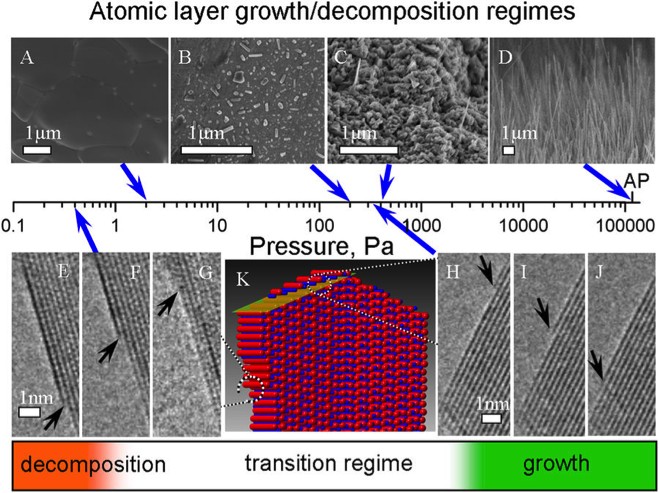An international team of researchers from the Skolkovo Institute of Science and Technology (Skoltech; Russia), University of Torino (Italy), Kemerovo State University (Russia), the Technical University of Denmark and Aalto University (Finland) have achieved a breakthrough results: they conducted an in situ examination of the growth and decomposition of nanowires. This shed light into how atoms are embedded in crystals and removed during the decomposition.
We are surrounded by crystals in our everyday life: from gemstones and metals to tiny snowflakes and silicon chips. Technological breakthroughs in crystal growth changed our lives considerably. Tough materials, microprocessors and solar cells are all made possible thanks to our knowledge of the processes guiding crystal growth.
However, the field still contains unravelled mysteries. Though the basic principles underlying crystal growth are known, we have not yet come to an understanding of how exactly atoms behave on the surface of crystals. This knowledge is very important for purposes of creating advanced materials and controlling their growth.
“Newly-emerged nanomaterials such as nanowires are considered to be promising materials for high-efficiency electronic devices. They are particularly useful in chemical and biological sensors, solar cells, field emission devices, and lasers. Moreover, a nanowire is an example of an elongated crystal, therefore, it is an ideal object for examining crystal growth” commented Dr. Simas Rackauskas of University of Turin.
“In situ electron microscopy allows for the close examination of chemical reactions without disrupting them. Three distinct regimes were experimentally observed: growth, transition and decomposition. The transition regime, which has not been previously identified, marks the change between the growth to decomposition, which besides the fundamental importance offers new possibilities for the nanowire manipulation” said Prof. Albert Nasibulin of Skolkovo Institute of Science and Technology.

CuO atomic layer (AL) growth/decomposition regimes on NW at different O2 pressures and constant temperature of 400 °C.
The results of the study were recently published in the prestigious scientific journal Scientific Reports.
Rackauskas, S. D. Shandakov, H. Jiang, J. B. Wagner and A. G. Nasibulin. Direct observation of nanowire growth and decomposition Scientific Reports7, 12310 (2017).
doi:10.1038/s41598-017-12381-9
Contact information:
Skoltech Communications
+7 (495) 280 14 81
